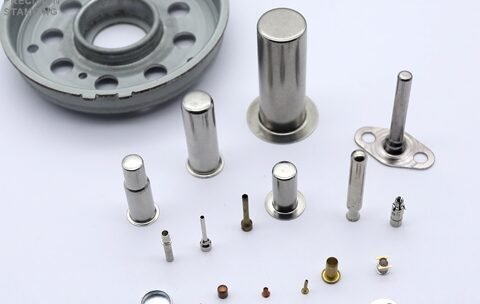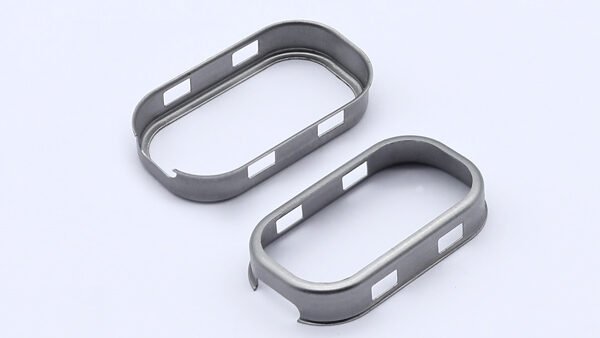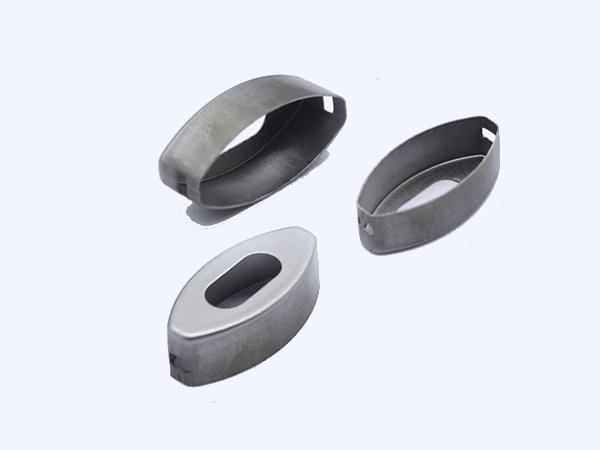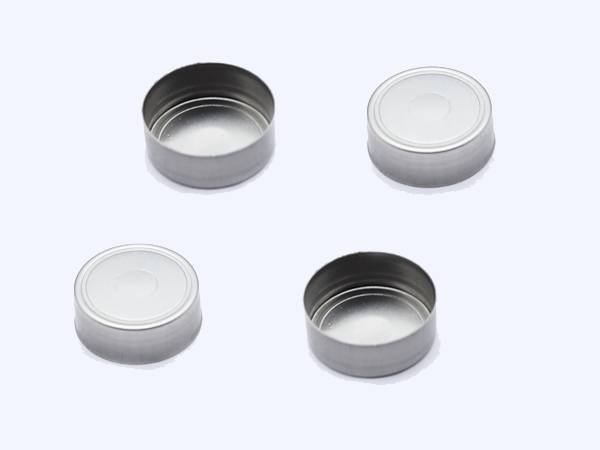Deep draw stamping, a cornerstone in the manufacturing world, has revolutionized the way we produce intricate metal components. As industries evolve, the significance of this technique only grows, making it imperative for professionals and enthusiasts alike to grasp its nuances. Did you know? Deep draw stamping is responsible for creating over 40% of all metal products we use daily, showcasing its widespread popularity and efficiency.
Deep draw stamping is a metal forming process that utilizes a series of dies to radially draw a sheet metal blank into a forming die by a punch, resulting in a 3-dimensional shape. This technique is especially favored for producing complex, high-precision metal parts that other methods might find challenging.
Eager to delve deeper? Join us as we unravel the intricacies of deep draw stamping, shedding light on its processes, benefits, and addressing the most burning questions surrounding this pivotal manufacturing method.

What is Deep Draw Stamping?
Deep draw stamping is a specialized metal forming process that transforms a flat sheet of metal, commonly referred to as a blank, into a deep, hollow shape, or a “drawn” part. Unlike standard stamping, which typically shapes metal without significantly altering its depth, deep draw stamping focuses on creating parts that have a depth greater than their diameter.
The Process
- Starting with the Blank: The process begins with a flat metal sheet, chosen based on the desired end product’s specifications.
- Drawing the Metal: A punch presses the metal sheet into a die cavity, forming the metal into the desired shape. This might be done in several stages, with each stage drawing the metal deeper and closer to the final form.
- Re-drawing: For especially deep parts, the metal might be redrawn through a series of dies, progressively shaping it without compromising its integrity.
Materials Commonly Used
Deep draw stamping is versatile and can be performed on a variety of metals. Some of the most commonly used materials include:
- Stainless Steel: Renowned for its corrosion resistance and strength.
- Aluminum: Lightweight and highly malleable, making it ideal for intricate shapes.
- Carbon Steel: Offers a balance between durability and formability.
- Copper: Known for its excellent electrical conductivity and is often used in electrical components.
- Brass: Often chosen for its aesthetic appeal and corrosion resistance.
The choice of material often depends on the intended application of the finished product, as each metal offers unique properties that can be advantageous in specific scenarios.

Benefits of Deep Draw Stamping
Deep draw stamping, while a technical process, offers a myriad of advantages that make it a preferred choice for many manufacturers. Here are some of its standout benefits:
- Cost-effectiveness: One of the most compelling advantages of deep draw stamping is its cost efficiency. By using a series of progressive dies in a single operation, manufacturers can produce large quantities of parts quickly, reducing labor costs and waste. Over time, this results in significant savings, especially when producing high-volume orders.
- Versatility in Producing Various Shapes: Deep draw stamping is not limited to simple or standard shapes. Its process allows for the creation of complex, intricate designs that might be challenging or even impossible with other methods. Whether you’re aiming for cylindrical, conical, rectangular, or any other unique shape, deep draw stamping has got you covered.
- High-quality Finish: The nature of the deep draw stamping process ensures that the finished parts have a smooth, high-quality surface finish. The metal is stretched and compressed, rather than cut or joined, which means there are no seams, rough edges, or irregularities. This not only enhances the aesthetic appeal of the product but also ensures its durability and functionality.
Incorporating deep draw stamping into manufacturing processes can lead to superior products, reduced production costs, and an edge over competitors who might still rely on more traditional, less efficient methods.
Common Applications of Deep Draw Stamping
Deep draw stamping, with its ability to produce intricate and durable parts, finds its applications across a multitude of industries. Its versatility and efficiency make it a go-to method for various manufacturing needs.
Industries that Frequently Use this Method
- Automotive Industry: Deep draw stamping is pivotal in producing parts like fuel tanks, mufflers, and various engine components.
- Aerospace: Components like aircraft housings, engine parts, and other critical components are often manufactured using this method due to the precision and durability it offers.
- Medical: Surgical instruments, enclosures for medical devices, and implantable components often rely on deep draw stamping for its precision and ability to work with biocompatible metals.
- Electronics: Casings for batteries, metal enclosures for electronic devices, and connectors are just a few examples where this method is invaluable.
- Home Appliances: Many household items, from cookware to washing machine drums, benefit from the deep draw stamping process.
Examples of Products Made Using Deep Draw Stamping
- Beverage Cans: The cylindrical shape and smooth finish of beverage cans are achieved through deep draw stamping.
- Cooking Pots: The deep, seamless structure of many cooking pots is a result of this method.
- Fire Extinguisher Shells: The durable and seamless shells of fire extinguishers are often produced using deep draw stamping.
- Metal Housings for Cameras: The protective metal casings for many cameras and photographic equipment are crafted using this technique.
- Aerosol Spray Cans: The familiar shape and design of aerosol cans are a direct result of deep draw stamping.
The widespread application of deep draw stamping across various industries is a testament to its efficiency, versatility, and the high-quality results it consistently delivers.

Challenges in Deep Draw Stamping
While deep draw stamping offers numerous advantages, like any manufacturing process, it comes with its own set of challenges. Recognizing these challenges and implementing effective solutions is crucial for maintaining efficiency and product quality.
Potential Issues During the Process
- Wrinkling: As the metal sheet is drawn into the die, it can sometimes wrinkle, especially around the flange area.
- Tearing: If the metal is stretched too thin during the drawing process, it can tear.
- Springback: After the metal has been formed, it might try to revert to its original shape, leading to dimensional inaccuracies.
- Surface Defects: Scratches, marks, or blemishes can occur if the metal sheet comes into unwanted contact with other surfaces.
- Material Variability: Differences in material properties can lead to inconsistencies in the final product.
Solutions and Best Practices to Overcome These Challenges
- Optimal Die Design: A well-designed die can minimize wrinkling and tearing. It’s essential to ensure that the die radius and blank holder force are optimized.
- Lubrication: Proper lubrication reduces friction, preventing surface defects and ensuring a smoother drawing process.
- Material Selection: Choosing the right material with consistent properties is crucial. Pre-testing materials for consistency can help in achieving uniform results.
- Slow Drawing Speed: Reducing the drawing speed can help in preventing tearing, especially with more malleable metals.
- Post-process Treatments: Processes like annealing can help in reducing the effects of springback and ensure the metal retains its desired shape.
By understanding these challenges and implementing the suggested solutions, manufacturers can ensure that the deep draw stamping process is as efficient and error-free as possible.

Comparing Deep Draw Stamping to Other Stamping Methods
Stamping is a broad category in metal forming, with deep draw stamping being one of its specialized subsets. When comparing deep draw stamping to other stamping methods, it’s essential to understand its unique advantages and potential drawbacks.
Advantages of Deep Draw Stamping
- Complex Shapes: Deep draw stamping excels in producing intricate, deep, and complex shapes that might be challenging for other methods.
- Material Efficiency: This method often results in less waste, as the metal is stretched and formed rather than cut away.
- Seamless Parts: Parts produced are seamless, enhancing their strength and aesthetic appeal.
- Consistency: With the right setup, deep draw stamping can produce large quantities of consistent, high-quality parts.
Disadvantages of Deep Draw Stamping
- Initial Setup Costs: The process requires specialized dies, which can be expensive to produce initially.
- Material Limitations: Not all metals are suitable for deep drawing, limiting the range of materials that can be used.
- Depth Limitations: While it’s great for creating deep parts, there’s a limit to how deep parts can be drawn without risking defects.
When to Choose Deep Draw Over Other Methods
- Depth Requirement: If the part requires a depth greater than half its diameter, deep draw stamping is often the preferred choice.
- Material Conservation: For projects where material conservation is a priority, the efficiency of deep draw stamping in reducing waste makes it a top choice.
- Seamless Construction: If the final product needs to be seamless, such as certain containers or cylinders, deep draw stamping is the way to go.
- High Volume Production: For large-scale production runs where consistency is crucial, the repeatability of deep draw stamping is a significant advantage.
In conclusion, while deep draw stamping offers numerous benefits, it’s essential to evaluate the specific requirements of a project to determine whether it’s the most suitable method or if another stamping technique might be more appropriate.

Conclusion
Deep draw stamping stands as a testament to the evolution of manufacturing processes, offering a blend of efficiency, precision, and versatility. Its ability to produce intricate, seamless parts has made it an indispensable tool in various industries, from automotive to electronics. As we’ve delved into its nuances, benefits, and applications, the significance of understanding this method becomes abundantly clear. It not only shapes the products we use daily but also the future trajectory of manufacturing as a whole.
As we look ahead, one can’t help but ponder: With the rapid advancements in technology and materials science, how will deep draw stamping evolve in the next decade? And what role will it play in shaping the next generation of products in our ever-evolving world?



